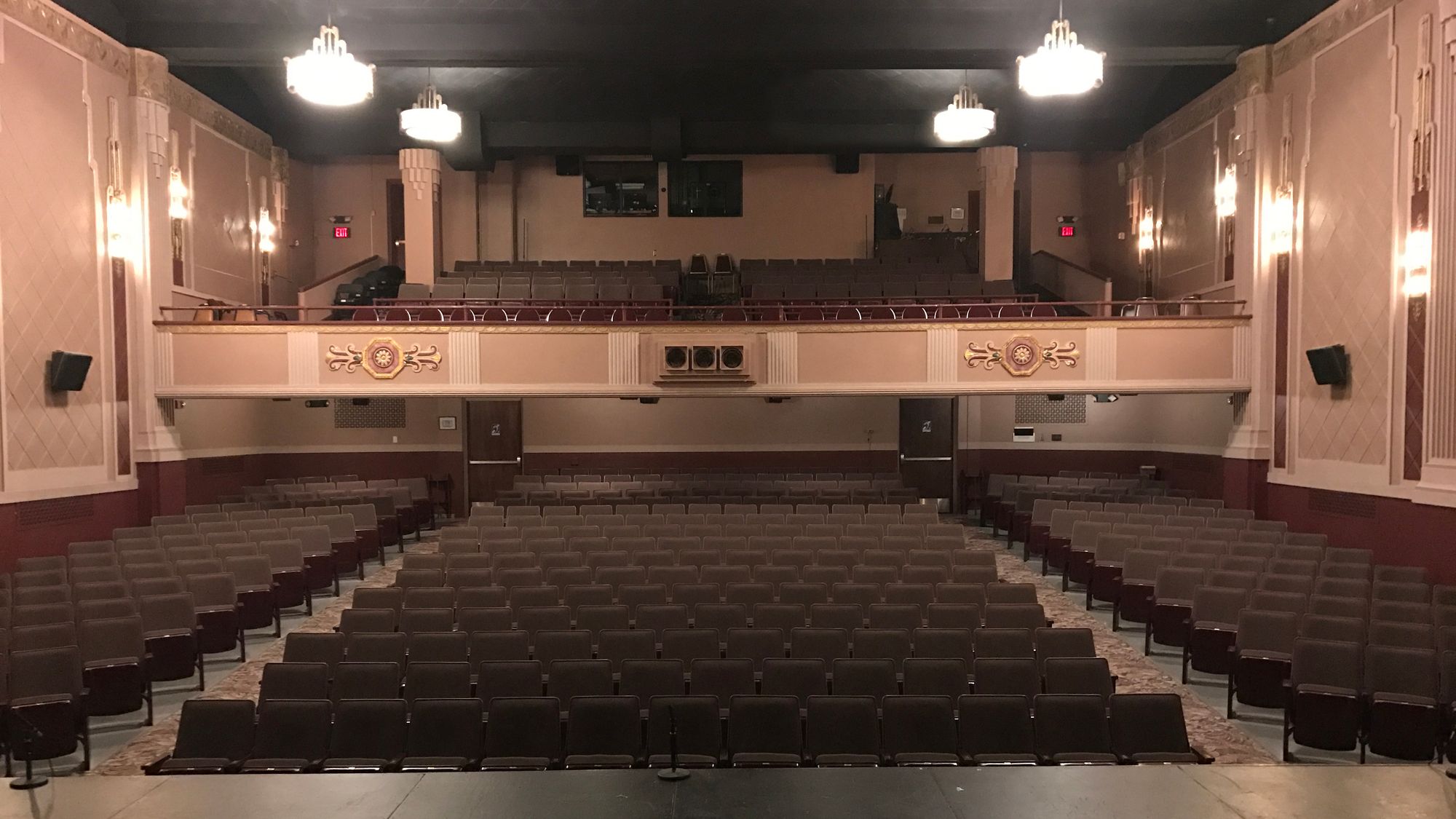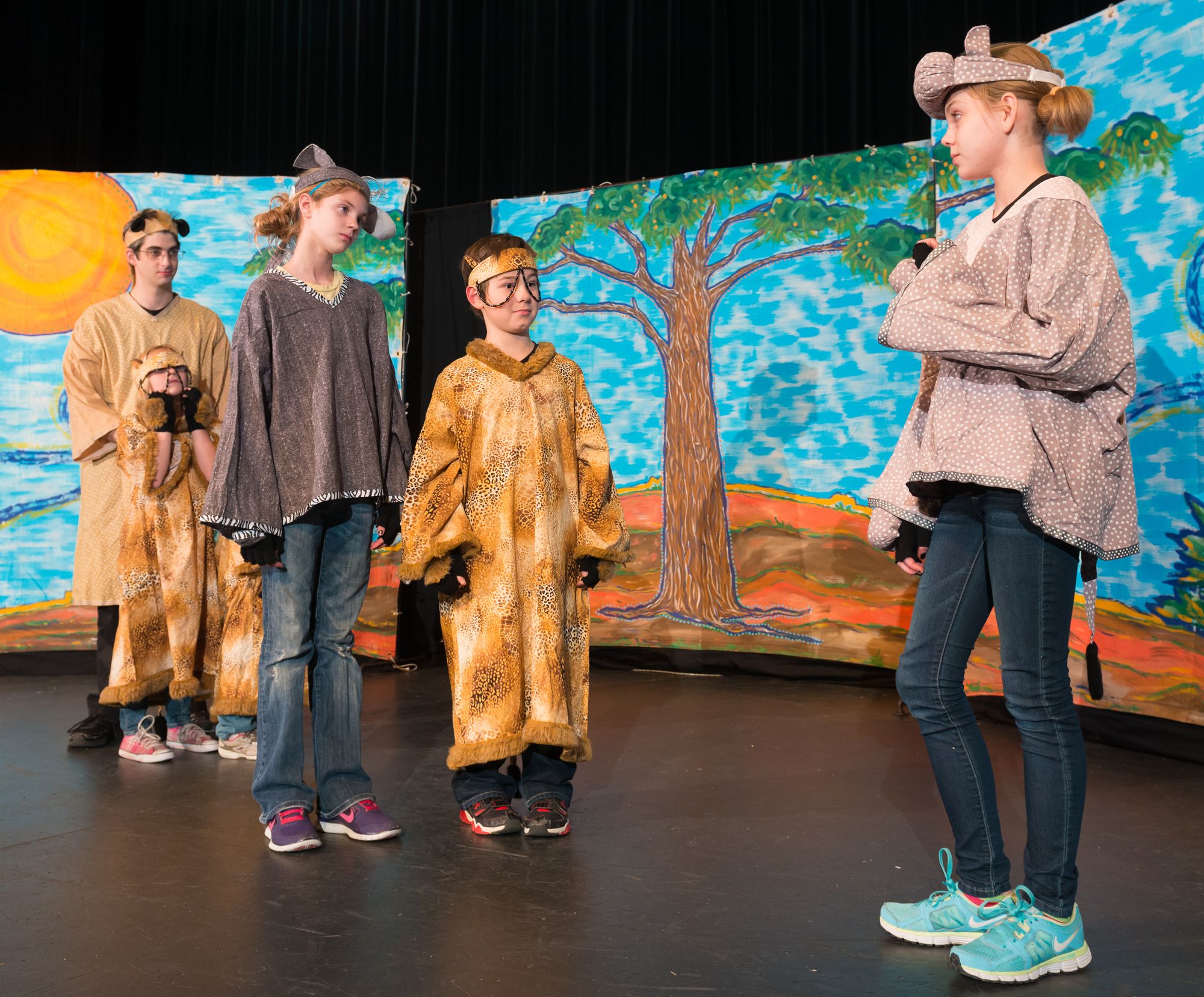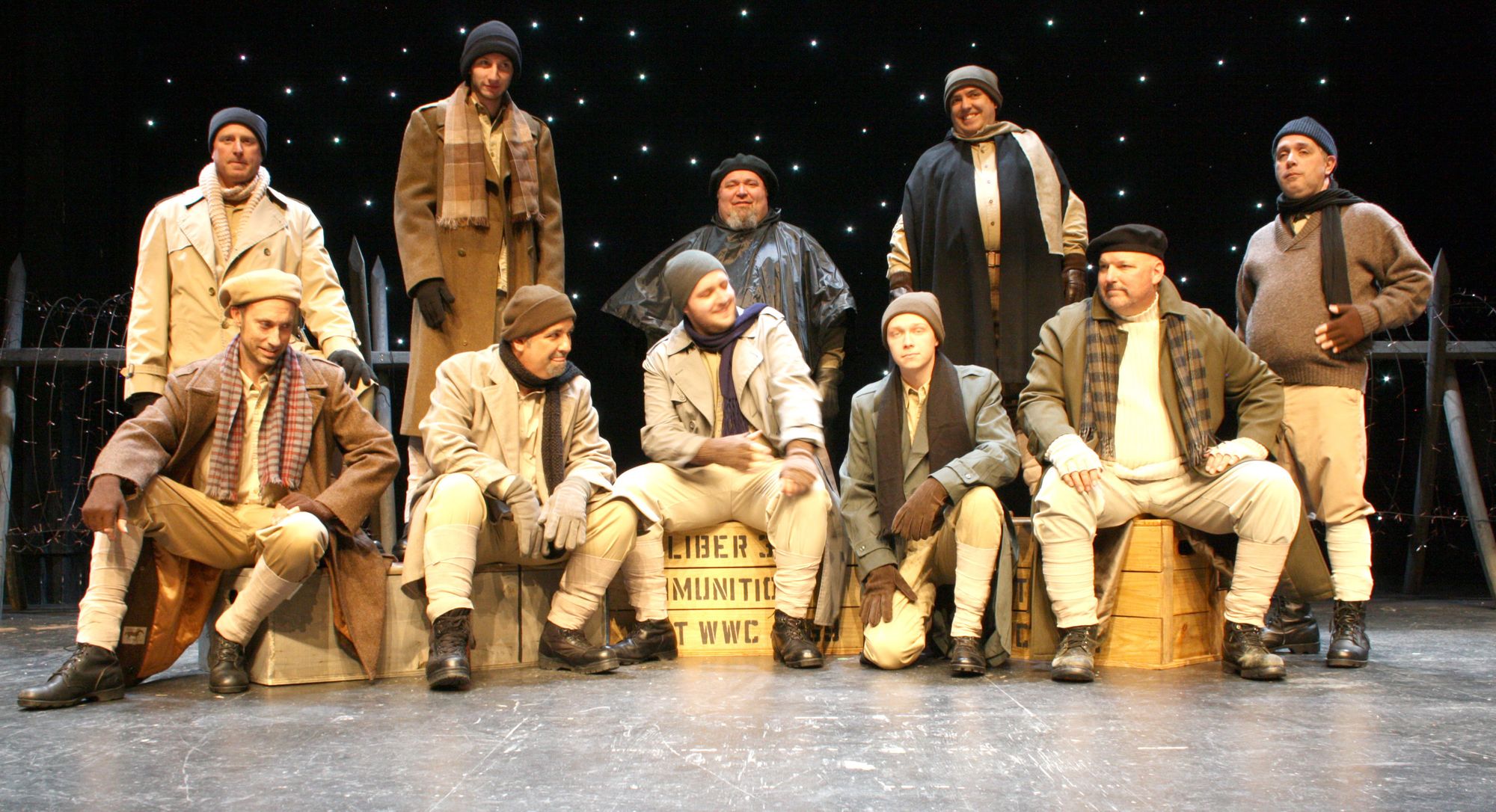South Dakota’s mostly non-profit theater industry has been devastated by the COVID-19 pandemic, which has forced the cancellations of stage plays, events and concerts across the state, resulting in millions of dollars worth of lost revenue, staff layoffs and ongoing budget cuts.
The financial losses have raised fears that some theater groups may not survive the pandemic or will return in a weakened condition, and that as a result, South Dakota communities and residents will lose access to attending or performing in artistic and creative endeavors that are part of a healthy and thriving society.
So far, the Black Hills Playhouse near Custer, the Prairie Repertory Theater in Brookings and many other community theater groups have persevered through the pandemic thanks to federally funded relief grants, reserve funds and federal unemployment benefits. But such assistance programs are running out of money and financial losses are mounting.
In mid-July, more than 150 South Dakota arts organizations, including theater groups, reported a combined financial loss of more than $6.7 million during the pandemic, according to a survey by the national advocacy organization Americans for the Arts. A total of 67% of the South Dakota survey respondents reported severe or extremely severe financial impacts from the pandemic, while 93% reported event cancelations. Only 53% of respondents said they were confident that their organization could survive the pandemic.
“Generally speaking, the situation is very dire,” said Jim Speirs, executive director of Arts South Dakota, a non-profit arts advocacy organization. “If we don’t see another round of help from the federal government … I think we would see some pretty serious repercussions in South Dakota.”

The South Dakota Arts Council, the state agency that oversees and funds the arts, has been able to fill in at least some of the financial gaps left by the pandemic. As part of the federal pandemic relief package, known as the CARES Act, the arts council has been given $422,800 to disperse as needed, said Deputy Director Rebecca Cruse.
The money is being distributed as emergency assistance grants to organizations in the most dire need and to create Residencies for Recovery, a program that places artists in communities that need help recovering from the pandemic. The grants haven’t been awarded just yet, Cruse said, but the council expects to spread the money between 68 organizations. Each organization’s award will be based on its pre-pandemic annual budget, but would amount to only $6,200 per group if divided equally.
“There’s no question that our arts and cultural organizations and institutions throughout South Dakota are essential to our state’s quality of life,” Cruse said in an email to News Watch. “There’s no question that these community leaders are incredibly important to the process of revitalization. This is where artists and community arts organizations shine.”
Arts Midwest, a regional nonprofit, has also distributed CARES Act funding in South Dakota. The organization has granted about $70,000 of relief funds to 10 organizations identified as having the most urgent need, Cruse said.
Still, Speirs and other leaders in the arts community worry that the pandemic may cause irrevocable damage to arts organizations which, in turn, would cause great harm to the communities, artists and economies they serve.
A 2012 report by Americans for the Arts found that non-profit arts and cultural events, such as concerts, theater productions and artistic festivals, attracted an estimated 3.3 million people to South Dakota and generated almost $97 million in spending in 2010.
“We stand to lose who we are in South Dakota without the arts,” Speirs said. “The arts are a reflection of our society. The arts tell our story. The arts reflect our feelings. The arts help us celebrate, help us mourn, help us gather as a community. If we didn’t have the creative community in South Dakota, we wouldn’t know our home. They make our communities who they are.”

"We stand to lose who we are in South Dakota without the arts ... if we didn't have the creative community in South Dakota, we wouldn't know our home. They make our communities who they are." -- Jim Speirs, executive director of Arts South Dakota
Losses mount as closures drag on
Theater, by its nature, requires close personal contact, whether between the actors on stage or the audience members packed elbow to elbow in their seats. In many ways, it is the close contact between everyone involved that makes live theater a unique, visceral experience. But close contact during a pandemic is also dangerous.
Because of the danger posed by COVID-19, some local governments across the U.S. and in South Dakota mandated the shutdown of stage productions as well as restaurant dining rooms and bars after the pandemic was declared an emergency. Most theater organizations in South Dakota recognized the danger to their casts and crews and shut down voluntarily.
The Black Hills Playhouse, a theater in Custer State Park, expected to celebrate its 75th season of performances in 2020 but was forced for the first time in its history to cancel its four-play summer season. The organization expects to fall $150,000 short in revenue in 2020 due to lost ticket sales, said Development Director Darla Drew.
The playhouse hires one of the state’s few professional theater companies each summer. The actors and technical crew come from all over the country to produce four main stage plays and help with educational events. The cast and crew live in dorms in Custer State Park and have regular interactions with the public, Drew said, so the risk of spreading COVID-19 was a big concern.
The summer season is also relatively expensive to host, costing roughly $600,000 a year. Not knowing whether a paying audience could actually be seated safely was another driving force behind the decision to cancel the 2020 season.
“We simply could not financially justify our season this year,” Drew said.

The playhouse, though, is more fortunate than most South Dakota theater organizations. The playhouse has developed a strong network of donors, is well known in the national theater community and has solid credit, so obtaining a loan isn’t out of the question, Drew said.
Community theaters across South Dakota have not been so fortunate.
In Aberdeen, the fully restored Art Deco marquee on the Capitol Theatre on Main Street has not been used for its intended purpose. As of late July, the Aberdeen Community Theatre group had been mostly idle for almost five months due to the pandemic, said Managing Director James Walker.
“It’s been devastating,” said Walker. “I cannot tell you when we’ll be on the other side of this thing and when we’ll be able to actually do programming again.”
The theater’s volunteers had begun production on its second play of 2020, “Bill W. and Dr. Bob” in March when the theater board canceled the remainder of the season due to COVID-19. Since then, aside from work around the theater building, some free online programming and a gig for the theater’s youth program at Storybook Land, there hasn’t been much to do.
Not putting on shows creates a landslide of problems. Ticket sales are the driving force of the organization’s revenue. Without shows or ticket sales, the theater is drawing on the reserve fund the organization spent four decades building to pay for staff salaries and utilities. Under current conditions, if enough costs can be cut, the organization should be able to keep itself afloat through November.
“After that, it’s going to be extremely difficult,” Walker said. “It’s not that we won’t be around at the end of that, I think we will, but it will be like starting from zero.”
Starting over would mean rebuilding programs such as senior theater and Young Persons Theater that residents of Aberdeen have come to rely on as a creative outlet, Walker said.

The show must go on
Deteriorating financial situations combined with the need to stay connected to their audiences and the desire to perform has community theater groups from Rapid City to Yankton planning to begin production schedules over the coming weeks. The first two weekends in August will see community theaters in Mitchell, Yankton and Pierre open the first shows of what they hope will be full 2020-21 production seasons.
The Mitchell Area Community Theatre is preparing to open its 2020-21 production season with the musical “Annie” on Aug. 6. The theater has a plan to keep its audiences as safe as possible, said Tim Goldammer, a member of the theater’s board of directors who is serving as a liaison between the board and the “Annie” cast.
Originally, the Mitchell theater had planned to stage “Annie” during the spring of 2020. But the production was shut down in March as part of local efforts to slow the spread of COVID-19. The theater’s volunteers have staged several radio plays over the summer through social media channels as well. But radio plays just weren’t generating revenue or filling the niche that theater occupies in the community, Goldammer said.
“It became clear that there was still a group of people that wanted to not only see theater live right now, but also perform theater live. And so we’re just trying to facilitate that,” Goldammer said.
Before attempting to perform the play, the theater devised a safety plan to make the production as safe as possible. During rehearsals, actors have been socially distancing as much as possible, costumes have been left untouched by anyone but the actor wearing them, and the theater has been disinfected after every session, Goldammer said.
For each performance of the play, the audience will be socially distanced. Every other row of seats in the Pepsi Cola Theatre for the Performing Arts, where the Mitchell theater group performs, has been closed off and tickets are only available for pre-order.
Pre-ordering of tickets has allowed theater volunteers to assign individuals or groups a set of seats that are at least six feet apart from any other group. After the show, all of the theater’s exits will be opened to prevent the audience from bunching up as they leave. Masks won’t be required for the audience but they will be strongly encouraged, Goldammer said.
As it turns out, there are quite a few people who want to see live theater, despite the ongoing pandemic. On July 24, roughly 60% of the available seating for the eight scheduled performances of “Annie” had been sold, Goldammer said. The tickets, which cost $20, went up for sale on July 23.
“We are moving in a direction that we like to see,” he said.
Demand for live theater may be strong, but the social distancing requirements and extra cleaning efforts will bite into whatever revenue Mitchell ACT is able to bring in from “Annie”. The Mitchell ACT’s financial situation is more precarious than it was before the pandemic, but it has persevered thanks to grants from the South Dakota Arts Council and donations from the community, Goldammer said.
“We’re blessed to have them,” he said. “We’ve been very fortunate.”
The past five months have not been easy for the Black Hills Community Theatre in Rapid City, but in late July, staff and volunteers were excited about the prospect of staging another show after a long hiatus, said Executive Director Nick Johnson. The theater’s board of directors cancelled the final two productions of the 2019-20 season in March due to the pandemic. Ticket sales ended, all events were cancelled and theater revenues plunged.

To keep at least some of its seven full-time staff members on the payroll, the threater took out a loan through the federal Paycheck Protection Program. Still, some paid staffers were furloughed and sought unemployment benefits to help relieve some of the financial pressure, Johnson said.
Furloughed staff were set to return to work during the first week of August. They would be needed to help plan the first show of the theater’s 2020-21 season, the comedy “Sense and Sensibility”, which was set to open at the end of September. But the theater’s board of directors and staff still must figure out a way to stage the show safely.
“Basically, we’re planning for the best and the worst,” Johnson said. “The best-case scenario is that we could start our productions again at the end of September, but if it just doesn’t pan out and we can’t do it safely, we won’t. We’re not blindly going into it.”
Restarting production isn’t just about jump-starting the theater’s revenue stream. In fact, there’s a chance that staging a play, even a relatively simple one, could end up costing more money than it brings in. There is virtually no way to sell a ticket for every seat in a theater and maintain the six feet of separation that the Centers for Disease Control and Prevention recommend as a way to prevent spreading COVID-19. So, the number of tickets sold will probably need to be reduced.
“We’re under no illusions that we’re going to be making money on ticket sales at the expense of safety,” Johnson said.
Instead, the idea is to try to bring back in some fashion the unique experience of live theater both for audiences and for the volunteer actors and technical crew that have come to rely on the theater as an outlet for their creativity.
“The essential function we provide is just bringing people together,” Johnson said. “People want a creative outlet and they want to see creativity at work. And I think that’s exactly what we’re going to do.”



